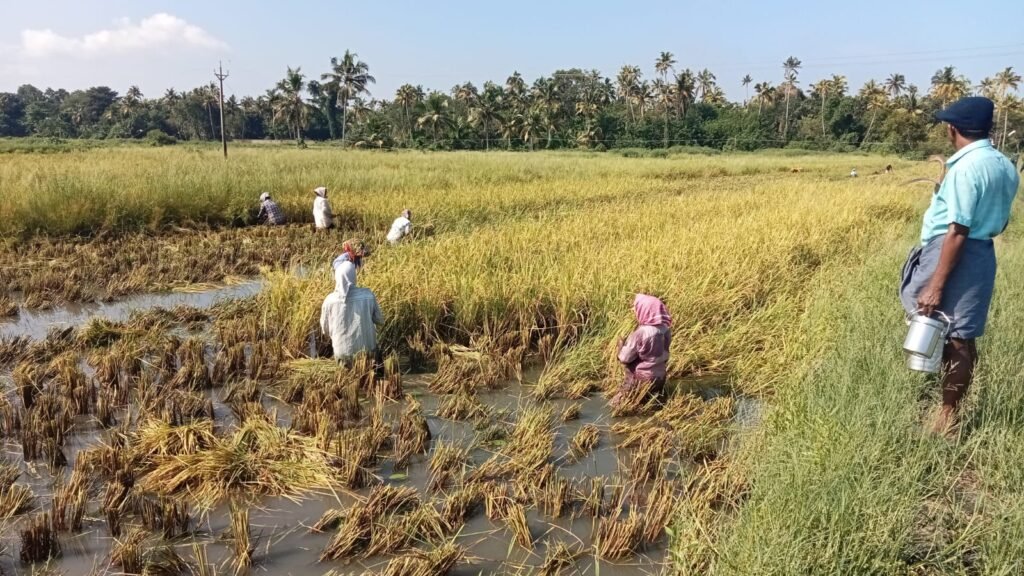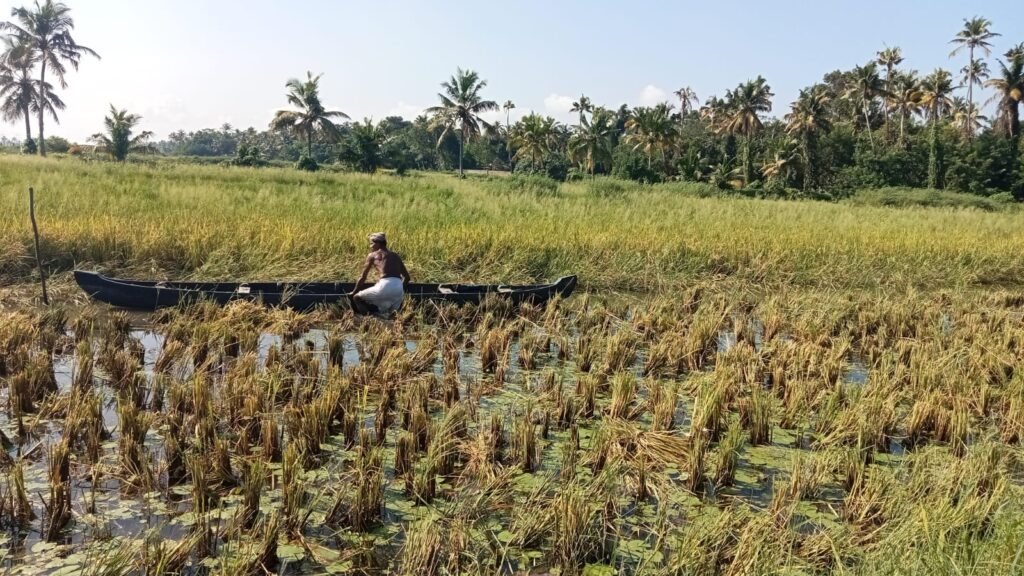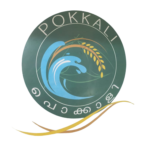Farming Practices

Rice cultivation occurs during the low salinity phase, generally from May-June to September-October. In contrast, aquaculture is carried out during the high salinity phase, typically from December to January.Soil mounds are prepared by mid-April and sluices (wooden gates) are repaired to regulate the water levels in the fields. The sluices control water flow during tidal changes, which is crucial for both rice cultivation and prawn farming. By mid-April, the soil mounds are dried and after April 14, sluices (water gates) are installed in the field to regulate water flow during tidal changes. Water channels and dikes are made followed by ploughing. The field is suitable for sowing once the monsoon has removed salt from the soil. The mounds act as elevated nursery beds, protecting the seedlings from flash floods.
A special method is adopted for sprouting the seeds. The seeds are tightly packed in baskets made of plaited coconut leaves, the inside of which is lined by banana or teak leaves. These baskets are then immersed in freshwater ponds for 12 to 15 hours. They are then taken out and stored in the shade. The radicle just sprouts and remains quiescent under this condition for more than 30 days. When the soil and weather conditions become favourable for sowing, the baskets containing the seeds are re-soaked for 3 to 6 hours before sowing. The mounds in the field are then raked and top-leveled. The sprouted seeds are sown on mounds, which act as an in situ nursery. When the seedlings reach a height of 40-45 cm (in 30-35 days), the mounds are cut into pieces with a few seedlings, which are uniformly spread in the field.
Manuring and Nutrient Management
Generally manuring or plant protection operations are not necessary for Pokkali farming systems. The crop matures in a trout for 12 days. After the rice harvest, the field is used for prawn capture, which provides a substantial subsidiary income to the farmer. In Pokkali cultivation where no chemical fertilizers are added. The annual transition from low saline to high saline phase is such that the stenohaline fauna and flora die out, decompose, and add to soil fertility. Forest areas were habituated centuries ago and have undergone decomposition and increased soil fertility. Moulting waste secreted by prawns and fishes aid in fertility.
Harvesting
Harvesting is done after 120 days of sowing. Harvesting takes place in October. Only the panicles are cut about 30 cm from the top and the rest of the stalks are left to decay in the water, which in time become feed for the prawns that start arriving in November-December. Then, the second phase of the Pokkali farming, the prawn filtration, begins. The rice matures in about 100 days, with the grains ripening into a golden color ready for harvest after 120 days. Harvesting is carried out by hand, often by women, who stand knee-deep in marshy fields.


Pokkali Prawn Culture
Pokkali prawn culture is an integral part of the traditional Pokkali farming system practiced in the coastal regions of Kerala. Following the rice harvest, the fields are prepared for aquaculture during the high salinity phase of the tidal cycle. Farmers obtain a “filtration license” from the Kerala State Fisheries Department to use public water bodies for aquaculture.
Saline water is allowed into the fields through carefully regulated sluices, and naturally available prawn larvae, such as species like Metapenaeus dobsoni, Penaeus indicus, and Penaeus monodon, are introduced into the shallow waters. Farmers use a conical-shaped prawn filtration net to trap and nurture the larvae, while bamboo screens are installed to prevent prawns from escaping. The prawns thrive in nutrient-rich fields, enriched by the organic residue left from rice cultivation.
This rotational system not only provides an additional source of income but also enhances soil fertility, making it a sustainable practice. With proper care and water level management, the system yields 3 to 5 tons of prawns per hectare while supporting the ecological balance of the wetland ecosystem.
